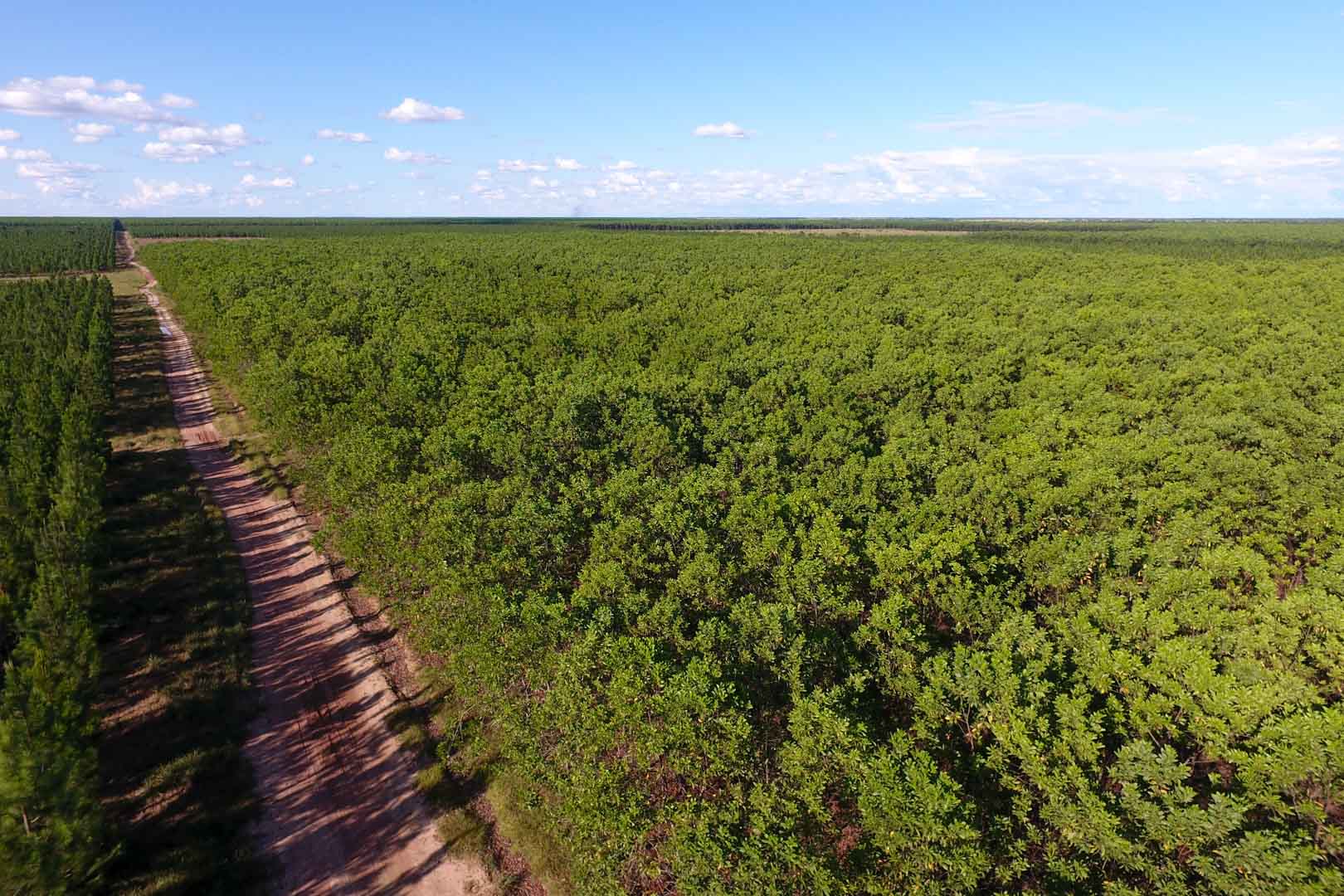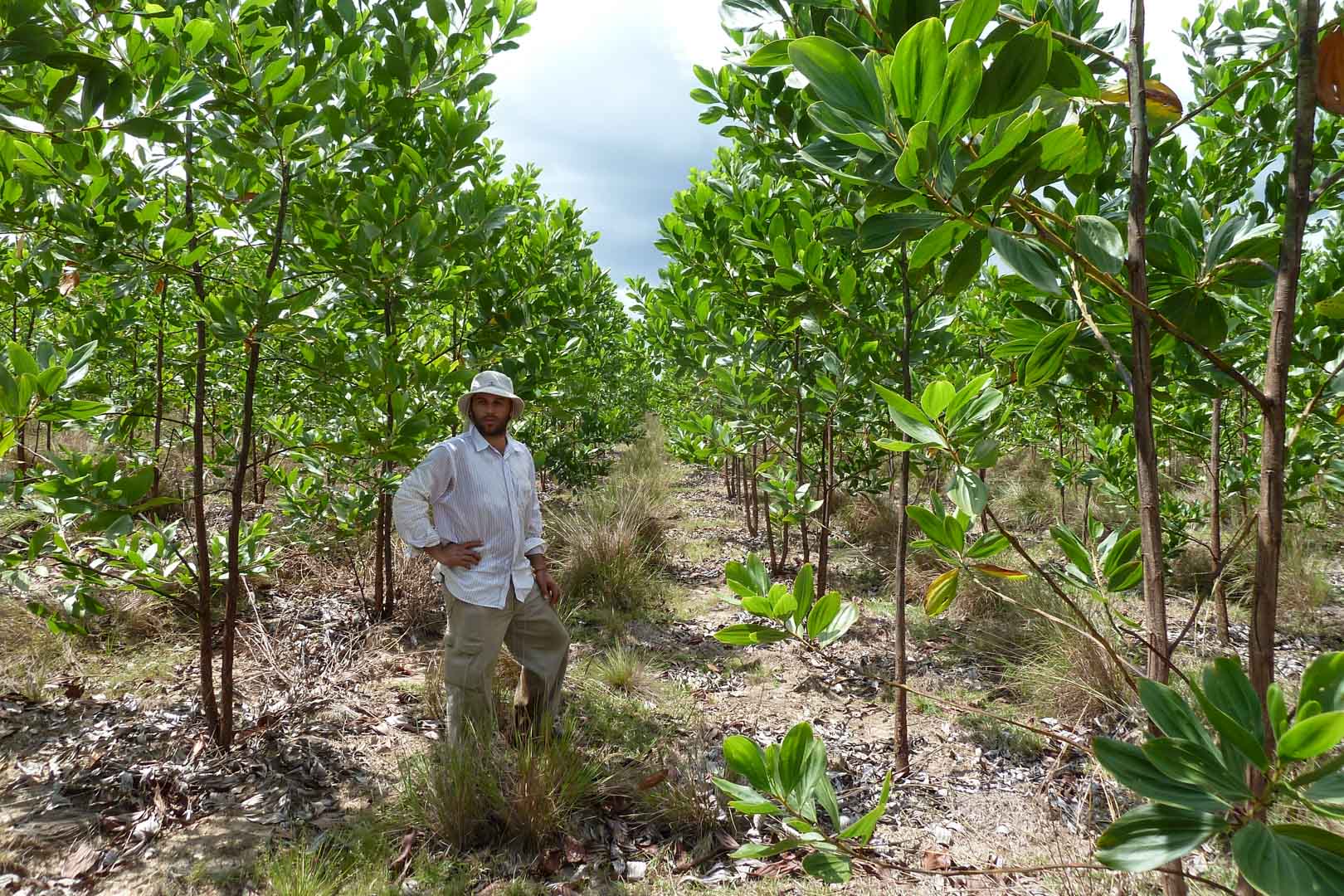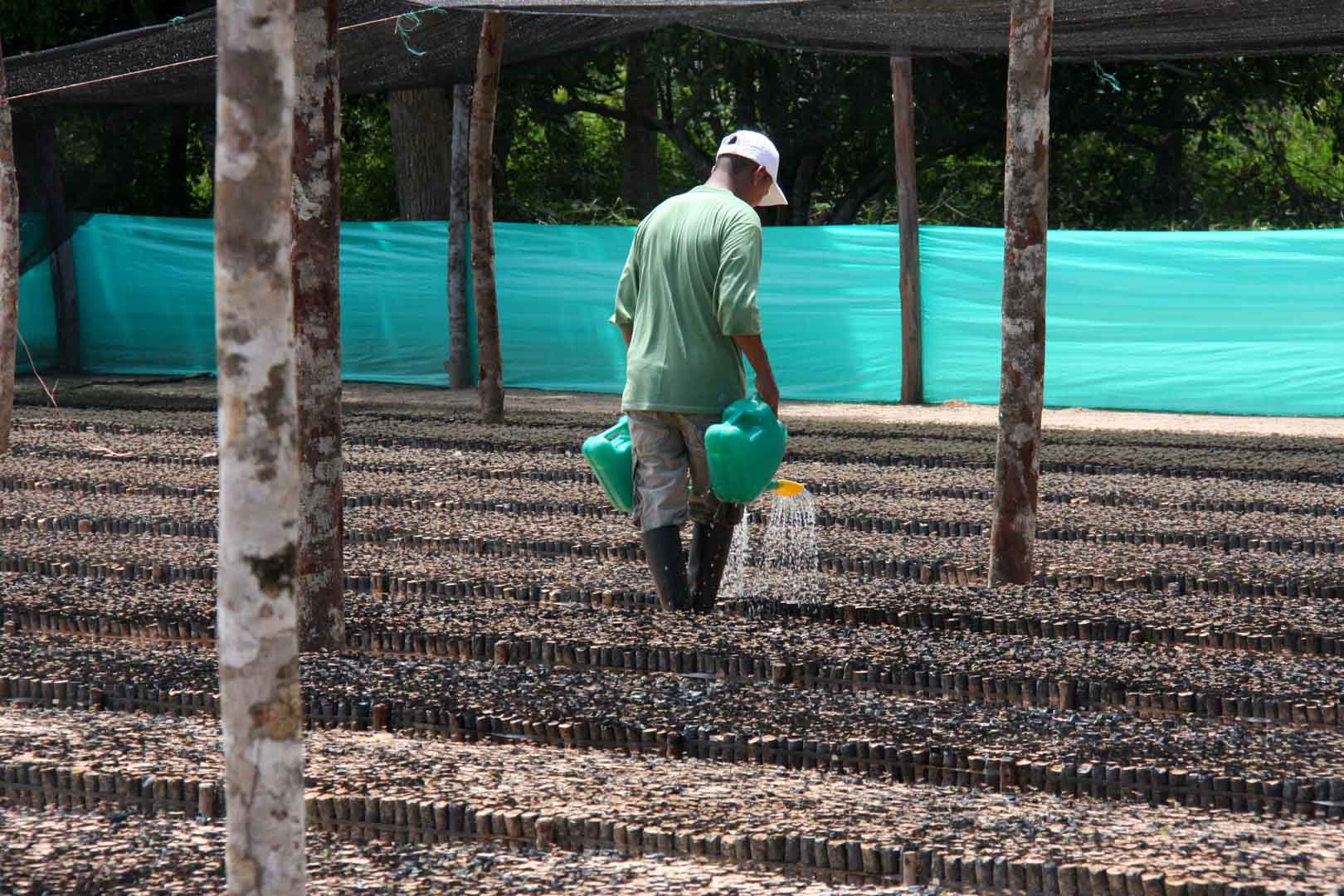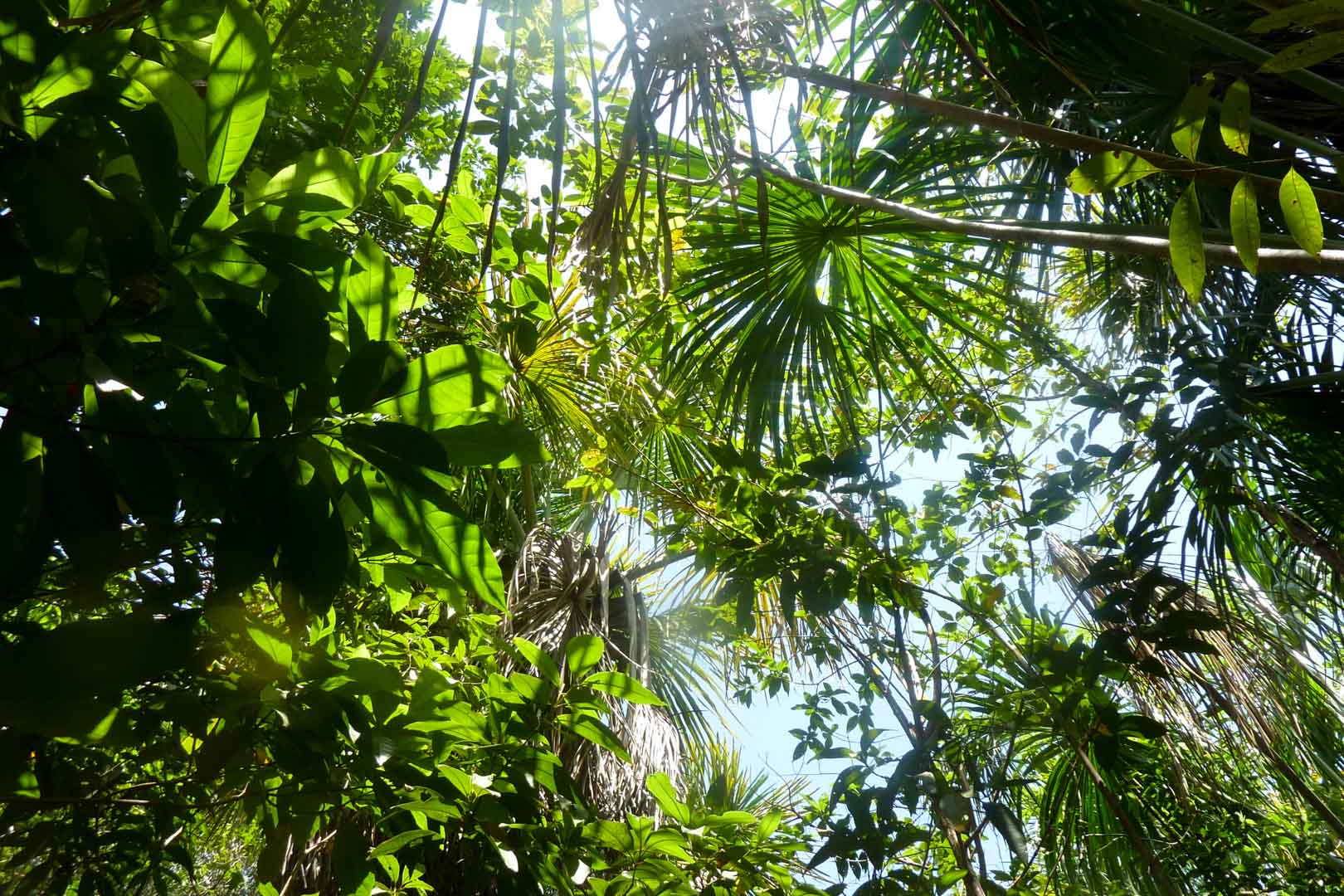Restoring degraded land and protecting Colombia’s biodiversity
The Vichada region in eastern Colombia was once a landscape rich in biodiversity. However, decades of extensive cattle ranching, recurring slash-and-burn practices, and the absence of sustainable land management have severely damaged large areas of native vegetation. It is estimated that over 60% of the natural savannas have been converted into pasture or cropland — with severe consequences such as soil degradation, nutrient loss, and a decline in biodiversity.
This climate project directly addresses these challenges: on around 21,400 hectares of heavily degraded land, acacia, pine, and eucalyptus trees are being planted. These species improve soil structure, prevent erosion, and create a stable microclimate — ideal conditions for native tree species to reestablish naturally.
Originally, the project also pursued a forestry component involving selective timber management. Over time, however, the focus has shifted toward reforestation and long-term land conservation with the goal of creating habitats for wildlife and native vegetation.
The project area now covers approximately 106,500 hectares, of which nearly 12,000 hectares are designated conservation zones. These areas serve as habitat corridors, maintaining ecological connectivity between valuable ecosystems — a key factor for the survival of migratory and wide-ranging animal species.
In addition, the project supports local social development by creating jobs and strengthening the regional economy.

Forests are essential in our lives and are among the planet's most important carbon sinks. Besides providing habitats for wildlife, they filter the air, stabilise and protect soils, store water, and contribute to the balance of our climate. However, global forest areas have declined sharply in recent decades due to increasing settlements, agriculture, illegal logging, and raw material extraction. Afforestation, reforestation, and revegetation activities significantly increase a forest’s carbon storage capacity in both the biomass of the forest and in the soil. The storage capacity varies according to the tree species, age, and location.
Experts distinguish these activities in the following way: Afforestation converts non-forested areas into forest ones. Reforestation restores forest areas that have been damaged or deforested in the past. Revegetation increases the vegetation through planting trees, shrubs, or other plants.
Four criteria for projects to meet quality thresholds
The life cycle of a climate project
A climate project has a set life cycle consisting of various phases, from the feasibility assessment to the retirement of Verified Emission Reductions (VERs).The project developer reviews the general feasibility of the project, the project design, and the financing. Then, the Project Design Document (PDD) is prepared, which contains all the basic information about the project, such as the objective, location, timeline, and duration.
In this phase, independent auditors examine the PDD and the information it contains. This phase often also involves field visits with on-side interviews and analyses. Auditors are accredited, impartial assessors who have to be approved by the relevant standard as a validation and verification body (VVB). TÜV Nord/Süd, S&A Carbon LLC., and SCS Global Services are examples of VVBs."
Once validated, the project can be registered with a standard such as the Verified Carbon Standard or the Gold Standard. All high-quality climate projects are based on international standards. They provide the framework for project design, construction, carbon accounting, and monitoring. Recognised standards make the climate project system and the projects themselves resilient, traceable, and credible.
After the climate project has been registered, the monitoring begins. Here, the project developers monitor and document the data of the project activities and progress. The duration of the monitoring phase varies from project to project: it can cover two years, but documentation over five or seven years is also possible.
At the end of each monitoring phase, a VVB checks and assesses whether the values and project activities stated in the monitoring report are correct. As with validation, visits to the project site are often part of the verification process.
Once verified, the emission reductions that were confirmed in the verification phase can be issued as VERs. The steps of monitoring, verification, and issuance of VERs are repeated regularly and are therefore considered as a cycle.
Once a VER has been used, it must be retired. This process is also reflected in the registry. If the financing of a climate project is done through ClimatePartner, the VERs are bundled in a system certified by TÜV Austria and then retired on a regular basis. This ensures that each VER can no longer be sold and is only used once, preventing double counting.
Explore our projects
Biochar for Climate Action, Healthy Soils, and Better Harvests

A certified climate project combined with additional commitment

Expansion of renewable energy generation in Asia

Ceramic water filters save CO2 and improve health

Improved cookstoves worldwide – for better health and cleaner air

A certified climate project combined with additional commitment

Powering access to renewable energy in Africa

A certified climate project combined with additional commitment

Restored ecosystems remove carbon

Turning degraded farmlands into healthy ecosystems

Improved cookstoves - better for health and the environment
















